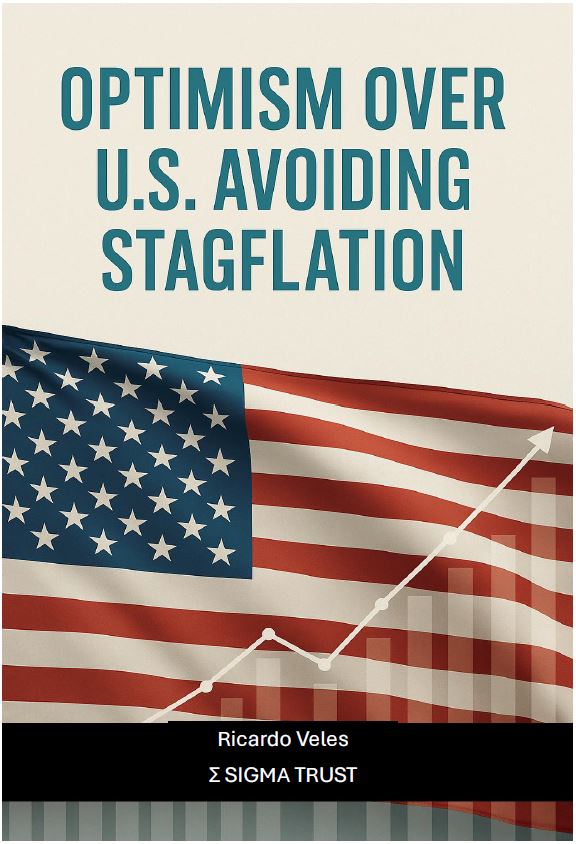
The specter of stagflation, low growth paired with persistent inflation, has haunted economic debates since the 1970s. As the U.S. navigates high interest rates, shifting global supply chains, and geopolitical shocks, many observers fear a return to that dreaded mix.
This eBook explores why the U.S. is more likely to sidestep stagflation, highlighting the drivers of growth, the trajectory of inflation, and the balancing act of monetary and fiscal policy.
Chapter 1 – Historical Lessons: Why Stagflation Still Haunts Policy
Oil shocks, wage–price spirals, and rigid labor contracts created the classic stagflation environment.
Energy intensity of GDP is lower, the Federal Reserve has credibility in fighting inflation, and wages adjust more flexibly.
Fears of stagflation resurface quickly, but structural conditions differ sharply.
Chapter 2 – Growth Foundations in the 2020s
High household savings buffers from the pandemic period still support consumption, even under tighter credit conditions.
U.S. firms demonstrate extraordinary pricing power, efficiency gains, and adoption of AI/automation to protect margins.
Despite demographic headwinds, immigration inflows have supported labor market depth and slowed wage–price pressures.
Chapter 3 – Inflation Dynamics: The Case for Gradual Cooling
The U.S. is now a net energy exporter, reducing vulnerability to foreign shocks.
Supply chain normalization has lowered goods prices after pandemic spikes.
While “sticky,” leading indicators like new leases point to moderation.
Surveys show households and markets still trust the Fed’s long-term 2% inflation target.
Chapter 4 – The Federal Reserve’s Balancing Act
Rapid rate hikes since 2022 successfully slowed demand without collapsing employment.
Fed communications have prevented unanchored inflation expectations.
Most forecasters now see growth slowing but positive, with inflation converging toward target,precisely the opposite of stagflation.
Chapter 5 – Structural Tailwinds Supporting Optimism
Artificial intelligence, biotech, and green transition investments boost productivity.
Federal subsidies (CHIPS Act, IRA) encourage domestic investment, enhancing medium-term capacity.
U.S. capital markets remain the deepest and most liquid, ensuring resilience during shocks.
Chapter 6 – Risks That Could Revive Stagflation Fears
Geopolitical conflicts could still trigger temporary price surges.
High deficits and debt could undermine investor confidence.
Trade barriers and currency volatility may import inflation.
Premature easing or excessive tightening could disturb the delicate balance.
Chapter 7 – Investor Implications
Tech, industrials, and infrastructure benefit from growth without runaway inflation.
Yield curves normalize as inflation moderates and the Fed pauses.
Less attractive compared to early-2020s surge, but remain hedges against tail risks.
Dollar retains reserve dominance, supported by resilient U.S. outlook.